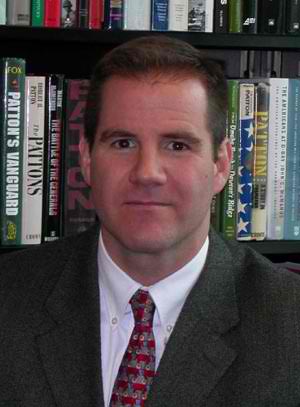 Seventy-eight years ago today, on April 18, 1942, Lieutenant Richard Cole sat next to Lieutenant Colonel Jimmy Doolittle as Doolittle flew his twin-engine North American B-25 Mitchell bomber off the deck of the USS Hornet in the Pacific Ocean. Their target: Tokyo. Their mission: leading 15 bombers on attack to the very heart of imperial Japan. The “Doolittle Raiders” shocked an over-confident Japan, and delivered to the American people a much-needed morale boost in the wake of Pearl Harbor. It was one of the most audacious actions of World War II.
Seventy-eight years ago today, on April 18, 1942, Lieutenant Richard Cole sat next to Lieutenant Colonel Jimmy Doolittle as Doolittle flew his twin-engine North American B-25 Mitchell bomber off the deck of the USS Hornet in the Pacific Ocean. Their target: Tokyo. Their mission: leading 15 bombers on attack to the very heart of imperial Japan. The “Doolittle Raiders” shocked an over-confident Japan, and delivered to the American people a much-needed morale boost in the wake of Pearl Harbor. It was one of the most audacious actions of World War II.
The raid also brought the pilots and their crews everlasting gratitude and fame. Richard Cole, the last surviving Doolittle Raider, passed away at the age of 103 on April 2, 2019. He retired as a lieutenant colonel and a beloved figure in the Air Force. The Air Force named a building after him at Hurlburt Field, Florida, and nicknamed the B-21 stealth bomber the Raider, in honor of the Doolittle raid. In 2014, Cole and two other surviving Raiders received the Congressional Gold Medal. On his last birthday, Air Force Chief of Staff General Dave Goldfein and his wife, called to wish him a happy birthday.
Cole was scheduled to be buried on April 16, 2020, but his funeral was rescheduled for a later date. While we wait, we can still remember and honor his actions.
 “If anyone was scared,” recalled Cole after the 1942 raid on Tokyo, “it didn’t show.” When Doolittle and Cole’s B-25 reached Japan, Cole counted at least 80 enemy planes in the sky, but none attacked. Enemy anti-aircraft fire, however, peppered their tail. Doolittle and Cole flew their bomber at tree-top level, then pulled up to 1,200 feet, and dropped a load of incendiary bombs on a factory. They then dropped back down, this time over housetops. Cole spotted the Imperial Palace and downtown Tokyo. Then he saw a huge explosion from another bomber hitting an electrical plant, “throwing much debris into the air.” They flew out to sea, aiming for Allied China, where they hoped to land. But without enough fuel, they calculated they would have to ditch their aircraft more than 100 miles from shore. Cole could see sharks in the water below, “which made the ditching very unappealing.” Fortunately, a friendly tailwind helped push them over land.
“If anyone was scared,” recalled Cole after the 1942 raid on Tokyo, “it didn’t show.” When Doolittle and Cole’s B-25 reached Japan, Cole counted at least 80 enemy planes in the sky, but none attacked. Enemy anti-aircraft fire, however, peppered their tail. Doolittle and Cole flew their bomber at tree-top level, then pulled up to 1,200 feet, and dropped a load of incendiary bombs on a factory. They then dropped back down, this time over housetops. Cole spotted the Imperial Palace and downtown Tokyo. Then he saw a huge explosion from another bomber hitting an electrical plant, “throwing much debris into the air.” They flew out to sea, aiming for Allied China, where they hoped to land. But without enough fuel, they calculated they would have to ditch their aircraft more than 100 miles from shore. Cole could see sharks in the water below, “which made the ditching very unappealing.” Fortunately, a friendly tailwind helped push them over land.
The crew parachuted out of the bomber as it ran out of fuel. Cole landed in a tree in pitch darkness. “I was in one scared piece, and I do mean scared,” he wrote. He fashioned a hammock out of his parachute and spent the night there. The next morning, he reached a village, where he reunited with Doolittle and the rest of the crew. Not all of the crews survived. Three died during the mission, eight were captured by the Japanese—three of whom were executed, while one died in captivity—and five were interned in the Soviet Union.
Eventually, the survivors were brought home. Doolittle earned the Medal of Honor for leading the raid and was immediately promoted to brigadier general, skipping the rank of colonel.
After World War II, every year around April 18 the surviving Doolittle Raiders reunited to share stories and drink a toast, each raising a silver goblet with their name engraved on it, to the memory of those who had passed away. No Raider will raise a goblet for Richard Cole this year, but he will be in our memories.
TO LEARN MORE:
-
The Doolittle Raid: America’s Daring First Strike Against Japan by Carroll V. Clines, Schiffer Military/Aviation History, 1991.
-
I Could Never be so Lucky Again: An Autobiography by James Doolittle, Bantam, 2009.
PHOTO CAPTION 1: Lieutenant Colonel Jimmy Doolittle (second from left) and Lieutenant Richard Cole (second from right) piloted the first medium bomber to take off from an aircraft carrier for a combat mission. Their raid on Tokyo boosted the morale of the American people. (Photo credit: National Archives and Records Administration)
PHOTO CAPTION 2: Lieutenant Colonel Jimmy Doolittle and co-pilot Lieutenant Richard Cole take off in their B-25 Mitchell bomber from the deck of the USS Hornet. Their target: Tokyo, Japan. (Photo credit: National Archives and Records Administration)
 Author: Kevin Hymel, Historian
Author: Kevin Hymel, Historian